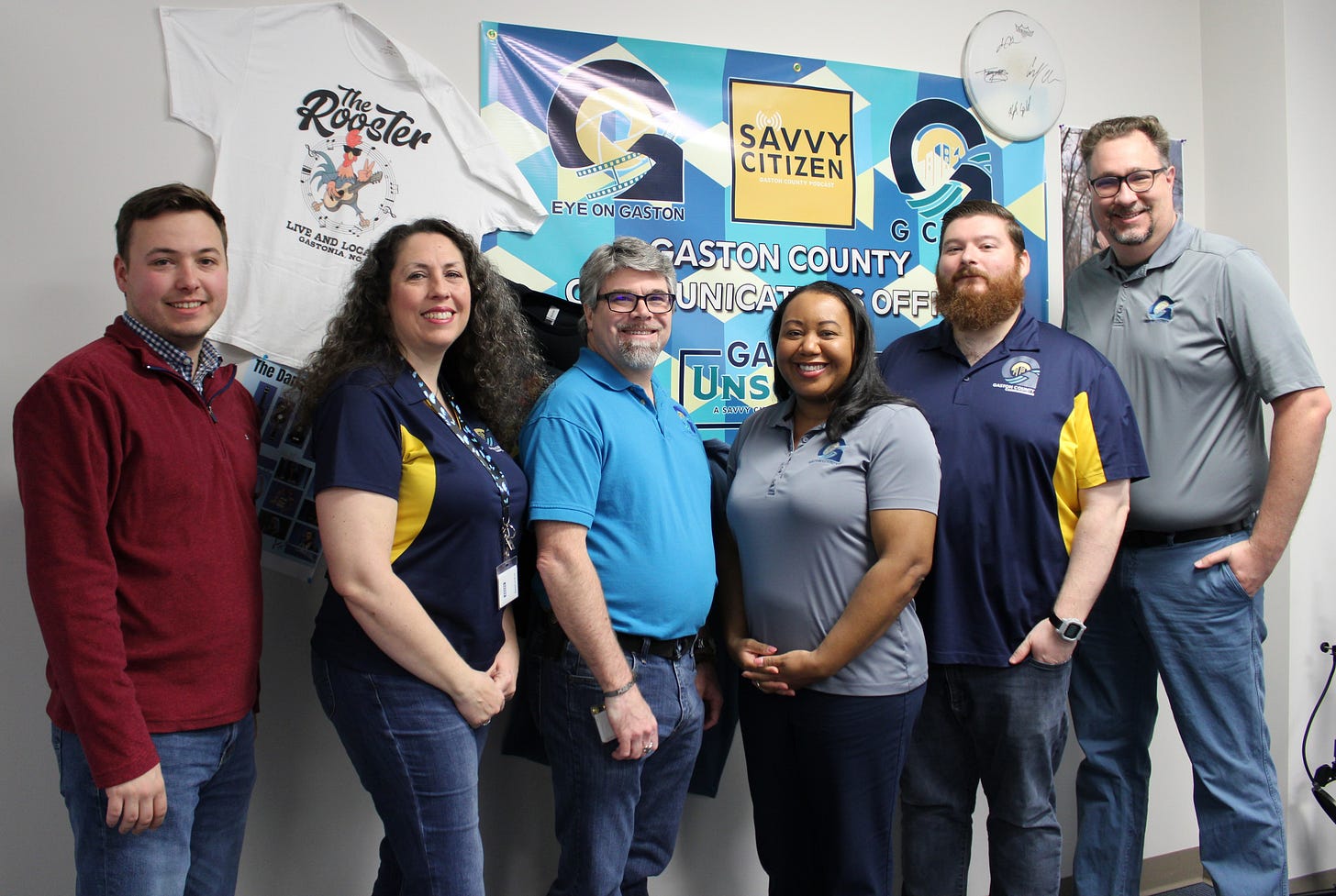Justice, Storytelling, and Public Trust: What Gaston County Gets Right
A true-crime documentary series with cinematic quality proves great government communication is great governance
A murder with no resolution. A missing person who never comes home. A crime scene where the clues ran dry decades ago. These are the realities of cold cases — haunting, heartbreaking, and sometimes brutal crimes that linger in limbo, leaving families to wait for answers that may never come.
For most people, these cases exist only in news archives and true crime documentaries. But for the team behind Gaston Unsolved, they’re an active mission — one that takes them deep into the lives of victims, their families, and even the people who have spent years tangled in the justice system.
That reality became clear when two members of the Gaston County, North Carolina, communications team set out to interview a key figure in one of their first episodes. They weren’t just meeting a grieving relative of a long-cold murder case. They were sitting down with a convicted murderer himself.
“We had to drive way out into the country,” said Barry Martin, one of the lead videographers on the series. “It was all farm country, and I’m thinking, ‘Wait a minute. This guy went to prison for murder. If he just really wants to murder two government employees, man, we’re just rolling right up on a silver platter.’”
His boss, Gaston County Communications Director Adam Gaub, was leading the interview. The convicted man, now an aging grandfather, had served his time and was living a quiet life. “It was not what I expected at all,” Martin admitted. “He was mellow, collected. He really just wanted to be back in the family way.”
Gaston Unsolved isn’t just a video project. It’s an opportunity to humanize the people involved in these cases — the victims, their families, and law enforcement officers working to bring closure to those families.
What stood out to me was the deep respect shown throughout the series, even in how law enforcement approached these cases. That speaks volumes about Gaston County government — they serve everyone, no matter their past. Whether someone has a criminal record or struggled with addiction, their humanity is recognized and valued.
The Gaston County team didn’t set out to make a social statement. But in telling these stories with empathy, dignity, and the kind of high production values that wouldn’t look out of place on a network crime show, they’ve done more than produce compelling content.
They’ve shown that local government can be a force for justice, for remembrance, and for proving that no case is ever truly closed.

The Problem: Cold Cases and Media Attention
Cold cases don’t just disappear. They fade, slowly, from public view. The families of victims never forget, but without fresh evidence or renewed media coverage, these cases often remain buried under newer headlines.
That’s exactly what has happened in Gaston County. Despite being part of the Charlotte media market, most of the area’s 60-plus unsolved homicides and missing persons cases have never received significant press attention.
That’s where Gaston Unsolved comes in.
The Innovative Solution: ‘Gaston Unsolved’
Instead of waiting for the media to take an interest, Gaston County decided to be its own newsroom. Gaub and his team created a full-fledged cold-case documentary series, bringing forgotten cases back to life with cinematic storytelling and investigative depth.
The production value of Gaston Unsolved is outstanding. The graphics, music choice and Gaub’s narration would be right at home on Unsolved Mysteries or Investigation Discovery.
“We wanted people to watch this and say, ‘I can’t believe government produced that,’” Gaub said.
But beyond the visuals, the team set out to honor the victims and their families in a way that many true crime productions fail to do.
“We also wanted it to have that sense of empathy,” Gaub said.
And they weren’t just covering recent cases. The oldest case they featured dated back to 1966.
“For some of these families, this is the first time they’ve been asked about these cases in decades,” Gaub said.
The series doesn’t just spotlight law enforcement’s work — it fosters collaboration across county departments, strengthens community ties, and reminds families that someone still cares.
And in at least one case, it led to new leads.
The Impact: What Gaston Unsolved Has Achieved
Since its launch, Gaston Unsolved has sparked significant community engagement, media attention, and even new investigative leads.
Community Response: People are watching. The series is one of the most-watched projects ever produced by Gaston County’s communications team. The first episode alone had nearly 2,500 views on YouTube, almost 180 hours of watch time, and gained 116 new subscribers to the channel.
Keep reading with a 7-day free trial
Subscribe to Good Government Files to keep reading this post and get 7 days of free access to the full post archives.




